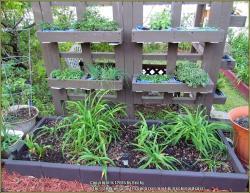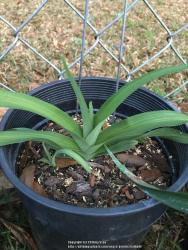Below is an example of published research looking at the effect of temperature on root growth in pine.

The graph shows that pine seedlings have an optimum soil temperature for root growth. Completely to be expected. It is likely that nearly all plant species that grow in more or less typical soil will have an optimum temperature for root growth. The optimum appears to be around 75F. Should I take anything away from this other than pine seedlings are typical, they grow in relation to temperature, as expected, they have an optimum temperature, as expected and that the optimum was not either very low or very high?
No.
At the bottom of this post are the methods used in the research. Do they resemble anything in nature? No. If the research question was investigated by another researcher would they find the same optimum temperature - probably not. Would they find the same general pattern of growth in relation to temperature - probably yes. If they repeated it with pine seedlings of a different genotype even with exactly the same methods they probably would not find the same optimum.
Much of the research Arisumi and Stout did was not aimed at anything more than general understanding of daylily biology - preliminary studies to learn about the basics. The basic result from Arisumi's temperature research is that daylily growth responds to temperature in the same way that other plant species do. Daylily growth will have an optimum temperature and at temperatures both below and above that optimum growth will be less. At some temperature above their optimum, daylilies will suffer heat stress. It is unlikely that any of the specifics of his design would make a radical difference to those conclusions.
Methods for the root growth- temperature study
The seedlings were grown in glass tubes about two inches in diameter
and 18 inches long. These tubes were closed at the lower end with rubber
stoppers and a layer of cinders placed over the stoppers. The tubes were
then filled with a loamy greenhouse soil, which was kept wetted to field
capacity. Although the soil was heated in an electric sterilizer before use,
it still contained two species of small animals, a nematode and a collembolan.
Neither seemed to be harmful; apparently they fed only on dead
tissue sloughing off the roots. The collembolans may have aided in aeration
by opening small passageways in the soil.
The soil atmosphere in the tubes was analyzed with a Haldane apparatus
and found to have approximately the same concentration of oxygen as
the outside air. The concentration of carbon dioxide in the soil was somewhat
higher than outside. The average amount was 1.0% and the maximum
2.88%. CANNON and FREE (6) reported that for several species there
was no detrimental effect on root growth of 20% or more carbon dioxide if
oxygen were not deficient. Since the soil atmosphere normally contains
more carbon dioxide than ordinary atmosphere and excesses from 0.2 to 5%
are not unusual (28), it is believed that growth was not abnormally influenced
by deficient oxygen or by an excess of carbon dioxide.
In the first series of experiments, the seedlings were started from seeds
planted in the tubes, but this proved unsatisfactory because the seeds did
not germinate uniformly. Seeds for the second series of experiments were
germinated on moist sand, and three seedlings were transplanted to each
tube. About two weeks at 20C were allowed for the seedlings to become
established before an experiment was started. The tubes were supported in
racks at an angle of about 40 degrees. This caused the roots to grow along
the lower side of the tubes where they were visible and could be measured.
Measurements were made for a period of three weeks for each series of tests.
Soil temperature was controlled by immersing the racks and tubes in
large tanks of water equipped with refrigeration and heating units, controlled
by thermoregulators and relays. To insure uniform temperature
throughout, each tank was equipped with a stirring unit which operated
intermittently. The variation in temperature was less than one degree
centigrade.
Four tanks were operated simultaneously. The tanks were covered with
pieces of insulating board containing holes for 12 tubes. Even though these
covers were not entirely light-tight, not enough light entered to permit the
growth of green algae in the tubes, and it is, therefore, believed that such
a low intensity could have had no significant effect on root growth. Although
considerable variations in air temperature and humidity occurred in
the greenhouse room where the tanks were located, all plants in a series
were exposed to the same variations.



